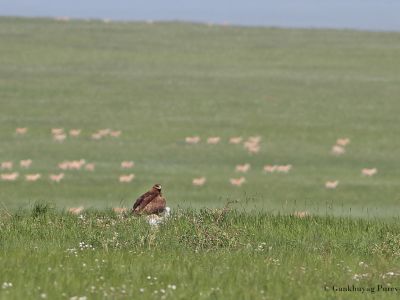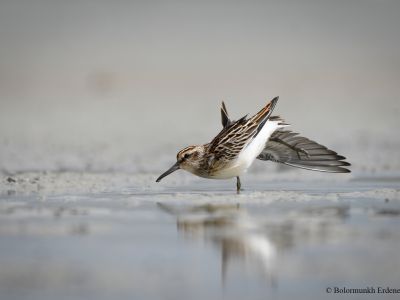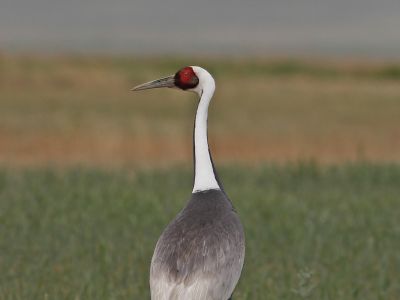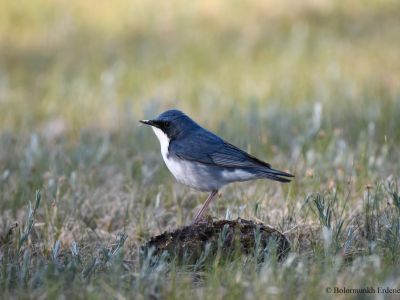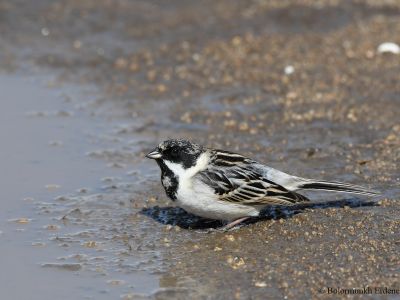Birding in Mongol Daguur grassland, north eastern Mongolia
One of the Global 200 ecoregionsSummary
This expedition is organized in partnership with the Mongolian Bird Conservation Center (MBCC), one of the leading local non-governmental organizations in avian research and conservation in Mongolia. MBCC has been working tirelessly to protect and preserve the eastern Mongolian steppe and its biodiversity through its long-term monitoring and implementation of various conservation projects. Participating in the expedition will enable you to contribute towards the protection and conservation of this unique region and provide an opportunity to learn from the rich expertise and knowledge that was gathered through their years of conservation work.
The expedition focuses on exploring and observing the rich avifauna of the Eastern Mongolian steppe. Eastern Mongolia is part of the planet’s largest and most intact expanse of temperate grassland and one of the last true wildernesses left on earth. Situated along the East-Asian and Australian flyways the region offers an opportunity to see a great number of bird species during their migration at some key stopover and staging sites. Out of almost 1000 bird species recorded in East Asia, 360 species are found in Eastern Mongolia. Of which 44 are waders.
Mongolia is well known for its low-density population and is considered the least populated country in the world. Eastern Mongolia is even more sparsely populated that you can go days without seeing any human presence. In the steppe only sound you hear could be grass crunching under your boots and larks chirping. You might find absolute peace here compared to fast-paced daily urban life.
Some part of Mongolia is relatively well explored by tourists during the short warm season in the summer but our chosen destinations in the eastern steppe are truly off the beaten path.
- The best tour dates: 15 - 29 May (peak of the spring migration),
01 - 14 Aug (autumn wader migration), 01 - 14 Sep (peak of the autumn migration). - Duration: 14 days
- Price: $2500
- Availability: Available
Key target species
- Swan Geese
- Amur Falcon
- Saker Falcon
- Eastern Marsh Harrier
- Steppe Eagle
- Daurian Partridge
- Demoiselle Crane
- White-naped Crane
- Siberian Crane
- Hooded Crane
- Eastern Great Bustard
- Oriental Plover
- Relict Gull
- Far-eastern Curlew
- Little Curlew
- Asian Dowitcher
- Sharp-tailed Sandpiper
- Broad-billed Sandpiper
- Long-toed Stint
- Red-necked Stint
- Grey Nightjar
- Siberian Blue Robin
- Siberian Rubythroat\
- Daurian Redstart
- Taiga Flycatcher
- Dark-sided Flycatcher
- Mugimaki Flycatcher
- Yellow-rumped Flycatcher
- Gray's grasshopper Warbler
- Chinese grasshopper Warbler
- Pallas’s grasshopper Warbler
- Black-browed reed Warbler
- Two-barred Warbler
- Arctic Warbler
- Radde's Warbler
- Chestnut Bunting
- Yellow-browed Bunting
ITINERARY
This itinerary comprises of few key destinations in far northeastern Mongolia such as Mongol Daguur, steppe lakes along Ulz river valley and adjacent wetlands.
Mongol Daguur
Daurian steppe ecoregion, a transnational protected area lies in the northern part of Inner Asia. Most of the Daurian steppe is situated in Eastern Mongolia and North-East China; the Russian part is confined to Zabaikalsky Province and the Buryat Republic. The area possesses a very high level of biodiversity for the steppe zone, and it is included in the Global 200 Ecoregions of the World.
Mongolian part of Daurian steppe is called “Mongol Daguur” and it is designated in the list of Wetlands of International Importance, Important Birds Area (MNO66), East Asian Crane Site, UNESCO-MAB, UNESCO World Heritage site, Daurian International Protected Area, WWF ECO 200, Mongolian Strictly Protected Area and East Asian-Australasian Flyway [024] network site.
Mongol Daguur wetlands are specific with the vast steppe and wetland valleys of tectonic and volcanic origins supporting numerous different (big and small) sized rivers and lakes. The wetlands and their immediate vicinities are rich in endemic flora species and provide important nesting, breeding, distribution, and stopover sites to the globally and regionally threatened bird species on their seasonal migration flyways. Amongst, there are six species of crane (Siberian, White-naped, Hooded, Demoiselle, Common and Red-crowned) occurring and stopover at the wetlands during their migration and breeding seasons.
In this remote grassland, rarely visited by tourists, we can find a remarkable assemblage of birds and mammals.
Ulz River valley and its wetland:
The Ulz River in northeastern Mongolia and shallow steppe lakes in the river valley are part of the Daurian steppe ecoregion which were inscribed in the list of World Heritage Sites, category natural properties to protect their unique ecosystem and wildlife. Many species of migratory birds breed and make stopovers at these wetlands during their migration.
Unfortunately, in the last 2 decades, the river level and size of the wetlands decreased due to successive droughts. Also, the number of breeding White-naped cranes and other endangered wetland bird species has declined due to habitat loss by overgrazing. For this reason, the importance of preservation is really high in the region.
Chukh Lake and CBRS:
The Chukh Bird Research Station (CBRS) was established in 2019 and coordinated by the MBCC. It is located at Chukh Lake along the Ulz River valley. The main aim of the CBRS is to carry out long-term and sustainable monitoring of breeding and migratory shorebird populations of Chukh Lake, and to conduct ecological and biological studies of the lake and its biodiversity. CBRS is aiming to become an international ornithological station in East Asia. Our further objectives include providing hands-on field training opportunities for students and local specialists, supporting master and doctoral research theses for young researchers, and promoting science-based environmental knowledge for local people.
Accommodation: Eastern Mongolia is a highly underdeveloped region. So our only lodgings option is a tent. Mongolia is generally a great place for camping as we are allowed to wander and set up our own camp wherever we want. Tents are also the most suitable accommodation for a birdwatching tour because we are able to spend the night nearby, or exactly at the bird watching hot spots. Therefore, we can start birding early the following morning, without wasting time on travel. It is a genuine natural experience that allows people to connect with the environment.
We provide our clients high quality, spacious 3 person North Face Summit series tents, warm sleeping bags and self-inflatable sleeping mattresses.
A spacious traditional Mongolian marquee style tent is set up for dining. It provides good insulation against the summer heat and protection from the cold spring wind. Tables and chairs are set up in the tent.
Climate: Depends on the season. Spring is predominantly dry and sunny, but some overcast weather and rain (or rarely even snow) are likely and the wind is regular.
Autumn has pleasantly warm and stable weather.
Transport: Transport options are usually 4WD Toyota Land Cruiser jeep or Russian UAZ 2206 minivan depending on the client’s choice.
TOUR REPORTS
| Report names | Report summary |
|---|---|
| Big mammals and birds of Eastern Mongolia. (06 - 16 Sep, 2020) | TOUR REPORT |
| Autumn birding trip to Eastern Mongolia - Jankowski's bunting and more (21 Sep - 06 Oct 2021) | TOUR REPORT |
TOUR DATES
| 2025 | |||||||
|---|---|---|---|---|---|---|---|
| Tour dates | Duration | Availability | |||||
| 19 May - 03 June 2026 | 16 days | Available | BOOK TOUR | SHOW DETAILS | |||
| 24 Aug - 08 Sep 2026 | 16 days | Available | BOOK TOUR | SHOW DETAILS | |||






